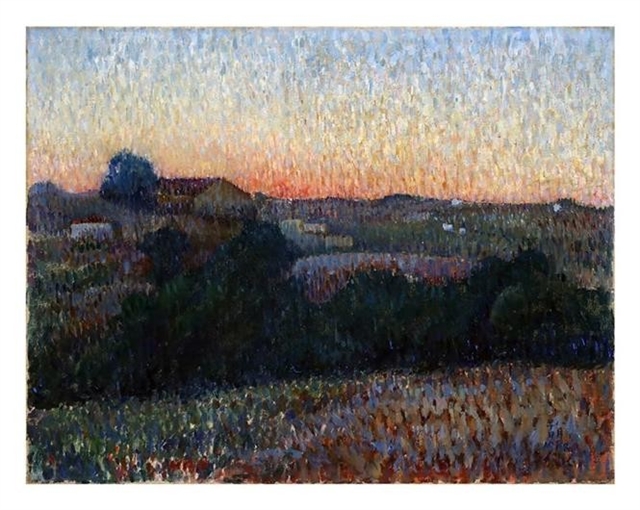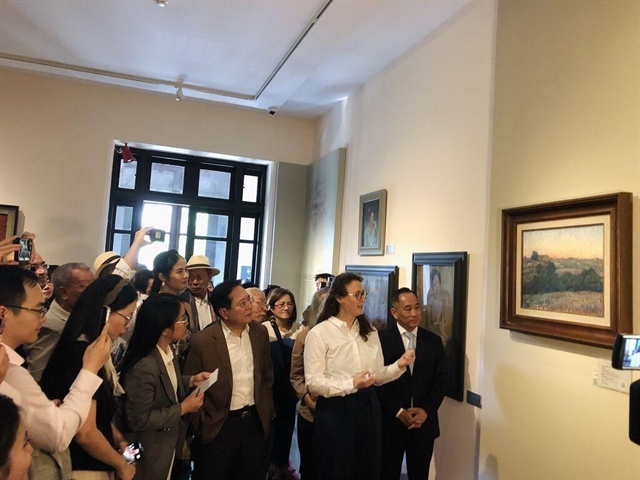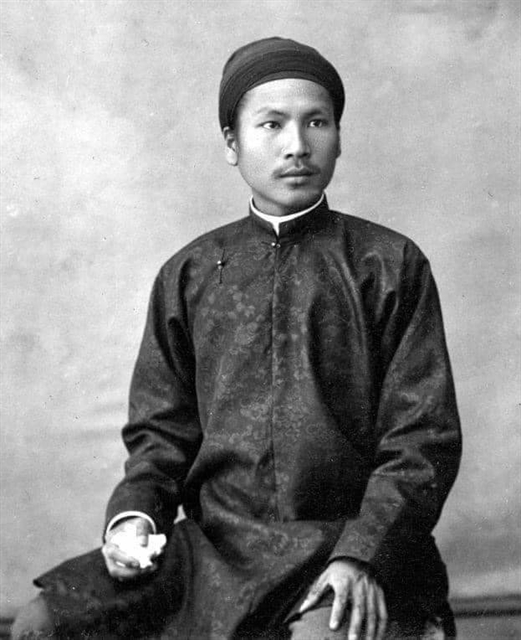Vietnamese exiled emperor's painting displayed in fine arts museum
Culture - Ngày đăng : 09:24, 15/11/2024
 |
| The oil painting Hillsides in Deli Ibrahim (Algiers) by Vietnamese emperor Hàm Nghi. |
HÀ NỘI — Amandine Dabat, emperor Hàm Nghi's fifth-generation descendant, has donated the artwork Hillsides in Deli Ibrahim (Algiers) by the emperor to the Việt Nam Museum of Fine Arts.
The oil painting, created by the emperor in 1908, depicts a countryside scene near his home in Algiers.
The artwork shows the sunset landscape with a backlight perspective. Using a dot painting style influenced by French painters of the late 19th century, Hàm Nghi made the vibrant colours of the evening come alive.
In 1926, the painting was exhibited at the Mantelet-Colette Weil Gallery in Paris under the name Tử Xuân.
"This is a typical example of Emperor Hàm Nghi's paintings, which were influenced by post-impressionism," Dabat said. "The emperor painted nature and sought to express light in its most subtle vibrations."
Dabat also released her book named Hàm Nghi — Empereur en exil, artiste à Alger (Hàm Nghi: Emperor in Exile — Artist in Algiers) based on her PhD thesis about the emperor's artistic career.
The publication contains over 70 pages of fine artworks, including pages of sculptures, documentary photos, and letters.
“I would like to present this painting at the same time as the publication of a book, compiled from my PhD thesis and translated into Vietnamese," Dabat said.
"This book describes the artistic life of the emperor Hàm Nghi, his influences, the development of his style and his friendships with great artists of the time. This allows the Vietnamese public to understand the entire context of Hàm Nghi’s works, thereby correctly assessing the position of his artworks in the history of Vietnamese fine arts.
"I hope the exhibition of this painting will pave the way for the display of other works by Hàm Nghi so that the Vietnamese public can better understand his artistic legacy.”
 |
| Amandine Dabat, emperor Hàm Nghi's fifth-generation descendant, introduce his oil painting. VNA/VNS Photo |
The Cernuschi Museum in Paris contacted her to include his works in their collection as Anne Fort, curator of Vietnamese art at the museum, announced that Hàm Nghi is now recognised as a Vietnamese artist.
Five of his works, including two oil paintings on canvas, two pastel paintings and a sculpture, were added to the Cernuschi collection in 2020.
Director of Việt Nam Museum of Fine Arts Nguyễn Anh Minh, said that the painting not only enriches the collection of the museum but also offers a valuable source of material for researchers of the history of modern and contemporary Vietnamese art in the late 19th and early 20th centuries.
Chairman of the Việt Nam Fine Arts Association Lương Xuân Đoàn said: "We can see that this is a special story of an exiled emperor to an artist. Hàm Nghi's landscape paintings are not just purely the landscape in front of him, but also the landscape paintings of his soul — missing his homeland."
 |
| Hàm Nghi was the eighth emperor of the Vietnamese Nguyễn Dynasty. He was exiled to Algeria, at the time a colony of France, on December 12, 1888. File photo |
Hàm Nghi, real name Nguyễn Phúc Ưng Lịch, was the eighth emperor of the Vietnamese Nguyễn Dynasty but only reigned for one year (1884-85).
After the failure of the Cần Vương (Save the King) movement against French colonial rule, Emperor Hàm Nghi was captured and exiled to Algeria, then a colony of France, on December 12, 1888.
While in exile in Algiers, he learned painting and sculpture techniques from the artist Marius Reynaud and dedicated the rest of his life to art, as a painter and sculptor.
He made several trips to France, where he met artists such as Japanese-French painter Léonard Tsuguharu Foujita, sculptor Rodin and the famous poet and writer Judith Gautier. — VNS
